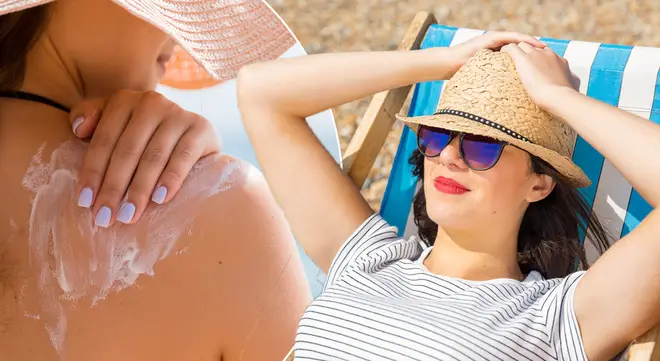On Air Now
Heart Breakfast with JK and Amanda Holden 6:30am - 10am
24 May 2019, 17:12 | Updated: 24 May 2019, 17:17

Does a sunscreen with a high SPF protect skin better than one with a lower SPF? And how high should you go? Find out everything...
It’s that time of year again, the sun is shining and and we finally get to dig out our shorts and vests.
But with thousands of Brits flocking to the nearest park or jetting off on their summer holidays in the coming weeks, what does this really mean for our skin?
Well, too much exposure to the sun can lead to nasty burns, not only are they painful, but sunburn can also have serious health implications like blistering and even an increased risk of skin cancer.
Here’s our guide to staying safe in the sun…

SPF actually stands for ‘sun protection factor’ and is a measure of how long a sunscreen will protect you from ultraviolet (UV) B rays.
Read More: Ex-flight attendant reveals why you should never take your shoes off on a plane
In theory, if you burn after 20 minutes in the sun and have an SPF 30 sunscreen on, you’d multiply 20 by the SPF (30 in this case), which means technically you’d be protected for 600 minutes - or about 10 hours.
But this shouldn’t be taken as an exact calculation, as the intensity and wavelength distribution of UVB rays vary throughout the day and depending where you are.

Another way to look at protection is in terms of percentages - the number of UVB rays you’re protected from increases with SPF.
The scale is as follows:
- SPF 15 blocks 93% of UVB rays
- SPF 30 blocks 97% of UVB rays
- SPF 50 blocks 98% of UVB rays
So, SPF 30 sunscreen gives you 4% more protection than SPF 15 sunscreen. They may seem like small differences, but the Skin Cancer Foundation explains that if you are light-sensitive, or have a history of skin cancer, those extra percentages will make a difference.
The Skin Cancer Foundation recommends that cream a with an SPF 15 and offers protection against both UVA and UVB rays should be worn at all times and is sufficient as long as it’s ‘applied adequately’.
Meanwhile, NICE (the National Institute for Health and Clinical Excellence) suggest a water-resistant sunscreen with an SPF of 30 or higher should be used for any extended outdoor activity, applied roughly half an hour before going out in the sun.
It’s recommended that you should reapply suncream every two hours, or immediately after swimming or sweating a lot.